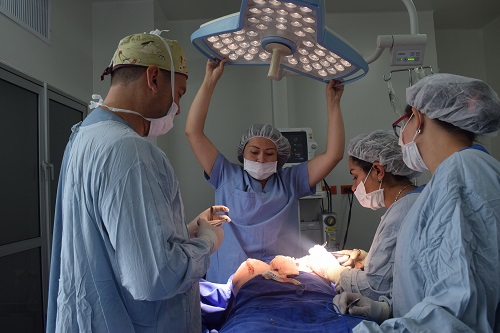Plastic surgery is one of the highest-paying medical specialties, so it’s no wonder many medical students develop an interest in this branch of practice. Within the field of plastic surgery are two areas of emphasis, cosmetic surgery and reconstructive surgery. Although both cosmetic and reconstructive surgery use similar procedures to achieve the best aesthetic results for patients, they differ in crucial ways, including the reasons for performing the surgery and the types of procedures most often performed in these subspecialties.
Understanding the Specialty of Plastic Surgery
Before you can really delve into the differences between cosmetic and reconstructive surgery, it helps to understand what the specialty of plastic surgery is about as a whole. Contrary to popular belief, the word “plastic” doesn’t refer to the artificial materials used in making implants, but rather the ancient Greek word “plastikos,” the University of Rochester Medical Center reported. Plastikos means to mold, shape or give form to. In other words, a plastic surgeon shapes and molds the human body.
Plastic surgery makes use of many of the same tools, techniques and procedures found in other medical and surgical specialties, including flap surgery and endoscopic surgeries, the University of Maryland Medical Center. Skin grafts, which may be used in general surgery, cancer surgery and burn treatment, can be an important technique in plastic surgery, as can skin tissue expansion. Some plastic surgery uses laser technology to achieve aesthetic and functional improvements in minimally invasive ways and with fewer side effects.
If you’re considering a career in plastic surgery, you might be surprised at the different types of patients you may see. Sure, there are models, celebrities and average people looking to improve their appearance, but there are also children with congenital defects and patients of all ages injured in accidents, burns and attacks.
Plastic surgeons work with all age groups, from children through elderly populations, Some plastic surgeons may develop long-term relationships with patients, such as children whose congenital conditions may necessitate repeated surgeries as they grow and develop.
Cosmetic vs. Reconstructive Plastic Surgery
IMAGE SOURCE: Pixabay, public domain
The purpose of strictly cosmetic surgery is different from that of reconstructive plastic surgery. Cosmetic surgery is performed to make visual and aesthetic improvements in patients who present with typical anatomy and physiology. Reconstructive surgery rebuilds or recreates both the function and appearance of some part or feature that is missing or deformed, the American Society of Plastic Surgeons reported.
The procedures involved in cosmetic and reconstructive surgery may even be, technically speaking, the same type of procedure. A woman who decides to get breast implants to purely enhance her appearance would be considered a cosmetic surgery patient, but a breast cancer survivor whose implants replace the breasts she had surgically removed during cancer treatment would be a reconstructive surgery patient. Similarly, one patient might get a “nose job” because they don’t like the size or shape of their nose, which would be cosmetic, but another might require surgery due to a disfiguring burn or attack or to a congenital medical condition, which would be reconstructive.
Breast reconstruction, craniofacial surgery, cleft lip and palate repair and scar revision are just a few examples of the long list of reconstructive procedures plastic surgeons perform, according to the American Society of Plastic Surgery. At the time of a serious accident, assault or other injury, a plastic surgeon may also be called in to carefully stitch up wounds to help minimize scarring in the first place.
Cosmetic plastic surgery, also called aesthetic plastic surgery, isn’t about restoring function or normal appearance, but instead augmenting the look of a body that is already normal or intact. Some of the most common cosmetic surgeries a plastic surgeon will perform include facelifts, liposuction, breast lifts and augmentation, surgical hair transplants and rhinoplasty, or nose surgery, the American Society of Plastic Surgeons reported.
Not all cosmetic surgeons focus on reconstructive plastic surgery, but all reconstructive plastic surgeons use cosmetic surgery in their work. Cosmetic surgery is an important part of the field of plastic surgery, the American Medical Association reported. Even reconstructive surgeons who don’t perform cosmetic procedures need strong skills in cosmetic surgical techniques to achieve good results for patients.
Many plastic surgeons in both cosmetic and reconstructive surgery work in private practices, but reconstructive plastic surgeons may also find job opportunities in hospitals.
Additional Resources
Is Most Plastic Surgery Performed in a Hospital? Is It Usually Outpatient Care?

